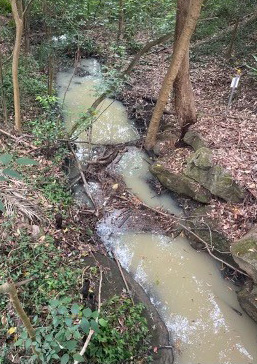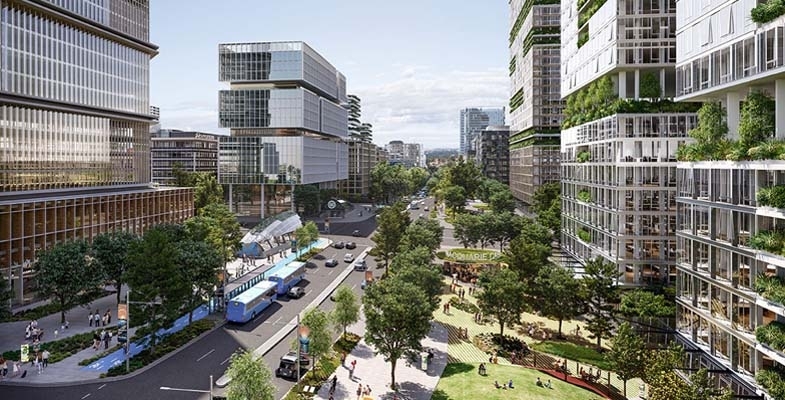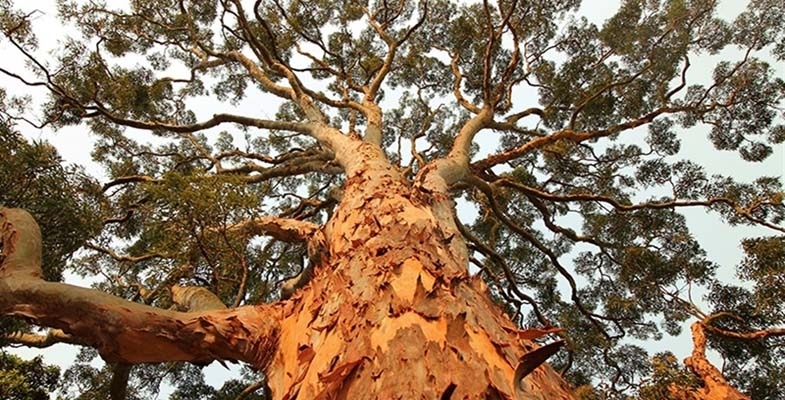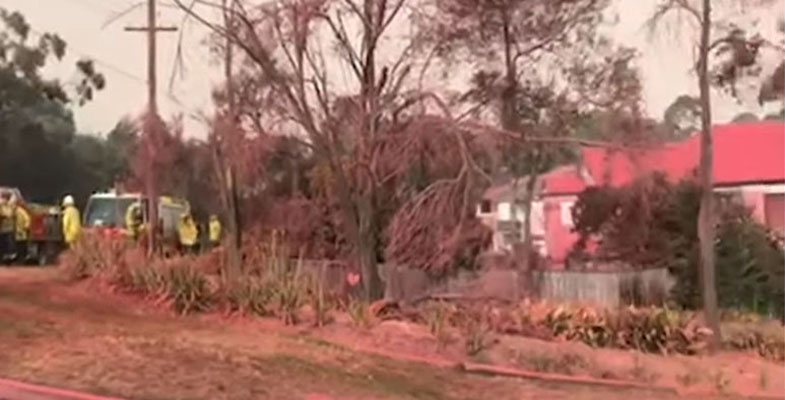STEP Matters 225
- Default
- Title
- Date
- Random
- When we make roads, houses or farmland, we often find large old trees in the way. Our response is often…Read More
- One of the Albanese Government’s promises was to take action to halt the alarming decline in our biodiversity and rewrite…Read More
- The NSW government’s Transport Oriented Development (TOD) plans came into effect on 1 April. We provided an outline in the…Read More
- Construction of the synthetic turf field at Norman Griffiths Oval in Bicentennial Park, West Pymble commenced in August 2023. You…Read More
- In Issue 221 we reported on the Chief Scientist’s report into Synthetic Turf Study in Public Open Spaces. One of…Read More
- We have observed several trees in Turramurra and Warrawee that seem to have died of natural causes. Here is one…Read More
- On 26 March Ku-ring-gai held a forum on the management of trees. It was very well attended with over 150…Read More
- Our talk on 27 April was presented by Shannon Kaiser, PhD researcher into the impact of aerially deployed fire retardants…Read More
- We are pleased to announce that the recipient of this years’ award is Solomon Maerowitz-McMahan for his project entitled Exploring…Read More
Large old trees are vital for Australian birds. Their long branches and hollows can’t be replaced by saplings
When we make roads, houses or farmland, we often find large old trees in the way. Our response is often to lop off offending branches or even cut the tree down.
This is a bad idea. The more we learn about large old trees, the more we realise their fundamental importance to birds, mammals, insects, plants and other inhabitants. More than 300 species of Australian birds and mammals need large old trees to live.
Why focus on mature trees? It’s because they have many features that younger trees simply don’t have: cracks, hollows, dead branches, peeling bark and large quantities of nectar and seeds. The limbs and leaves that fall on the ground make excellent homes for many small creatures.
Our new research sheds light on the importance of such grand old trees for birds. We used lidar (scanning using lasers) to map small, medium and large tree crowns in unprecedented detail. On average, we found large old trees had 383 metres of the horizontal or dead branches preferred by birds, while medium trees had very little and young trees none. Some old trees had almost 2 kilometres of branches.
Why are branches so important?
If we think of long, overhanging branches, chances are we may think “threat”. Some large trees can drop limbs without warning, although some arborists have pointed out the threat is overstated. To reduce the risk, councils and land managers may remove the limbs of large old trees.
But if you cut down a 300-year-old river red gum, you can’t simply replace it with a sapling of the same species. It will take centuries for the sapling to take up the same ecological role as its predecessor.
In our research, we mapped more than 100,000 branches from many millions of laser samples and recorded how birds use branches through years of field observations.
When we spot a bird using a branch, we can safely infer the bird has chosen it for a reason, whether resting, socialising, feeding, hunting or nesting.
What our data shows is that not all branches are equal. Birds find it easier to perch on horizontal or slightly inclined branches. Branches with few or no leaves offer clear vantage points for birds to land, hunt or see predators. You may have noticed crows and currawongs choosing dead branches for these reasons.
As trees mature, their branches begin to grow horizontally. Some branches may die due to lightning strikes, fire, wind damage, or attacks by insects or fungi, while the rest of the tree continues living. These long-term patterns of growth, decay and random events are necessary to produce the horizontal and dead branches prized by birds. For a large eucalypt, that process can take up to 200 years.
Mapping the canopy with lasers
Until recently, it’s been hard to map the tree canopy. Traditional methods rely on researchers visually assessing this vital habitat. But we know eye observations don’t do well at capturing parts of trees such as branches.
That’s where lidar comes in. Lidar sends out laser pulses, which bounce back when they hit objects. By recording the time taken for the light to return, we can build very detailed three-dimensional models. It’s a little like echolocation, but using light rather than sound.
This laser-scanning technology has been used in the jungles of Central America to find the ruins of lost Mayan cities. But it can do much more.
In forests, lidar is now increasingly used to estimate how dense the tree cover is, and how variable. This useful data feeds into how we assess a forest’s ability to store carbon, how much timber is present, and the current fire risk. We can even use it to spot animal pathways.
To get the canopy detail we wanted, we used lidar on the ground rather than from the air, and processed the data with algorithms that can recognise and describe about 90% of branches in even the largest trees.
We mapped trees in an area near Canberra. We chose this area because it represents the plight of temperate eucalypt woodlands, which have shrunk by up to 99% since European colonisation.
What should we do?
The very things that make branches good real estate for birds can make them seem dangerous or aesthetically displeasing to us. We tend to cut dead or long, horizontal branches and leave the living or more upright ones. But for birds, this is a disaster as many cannot live without such branches.
Young trees are no substitutes for their older counterparts. Planting saplings or installing nest boxes cannot replicate the ecological value of large, mature trees.
We can live alongside large old trees. To reduce the chance of injury or worse from falling limbs, we could use exclusion zones, add artificial supports for branches, and install devices to catch or redirect falling limbs. We can also look at emergency solutions such as prosthetic hollows on younger trees or even artificial replicas of old trees.
We should preserve these trees wherever we can and aim to keep them intact with their complex crowns and dead branches. We should also make sure there is a pipeline of young and medium trees to make sure there will be old trees in the future. ![]()
Alex Holland, Researcher at Deep Design Lab and PhD Candidate at Melbourne School of Design, The University of Melbourne; Jason Thompson, Associate Professor, Faculty of Medicine and Melbourne School of Design, The University of Melbourne; Philip Gibbons, Professor, Australian National University, and Stanislav Roudavski, Founder of Deep Design Lab and Senior Lecturer in Digital Architectural Design, The University of Melbourne
This article is republished from The Conversation under a Creative Commons license. Read the original article.
New nature laws announced but the most important parts are missing
One of the Albanese Government’s promises was to take action to halt the alarming decline in our biodiversity and rewrite the ineffective laws that were highlighted in the Samuel Review into the Environment and Biodiversity Conservation Act. In December 2022 the government announced what was dubbed the Nature Positive Plan with a comprehensive list of actions that are intended to be implemented.
The key part of the plan is to implement national environmental standards that will set the outcomes that the laws are seeking to achieve.
The timing of the introduction of the plan was to carry out consultation in stages and release an exposure draft of the legislation by the end of 2023. We are nowhere near that objective; in April the Minster for the Environment, Tanya Plibersek, announced that legislation will soon be presented to parliament to set up two new agencies:
- Environmental Protection Agency, to act as a national watchdog for nature
- Environmental Information Australia so everyone has access to authoritative data on our environment
But these are the easy parts. The major parts of the plan have been deferred with no time frame.
What use is a watchdog with no standards to enforce? The government appears to have given in to the mining lobby. There are also reports of warnings from the Western Australian Labor government of a backlash in the electorally critical state. This is so frustrating when the need for comprehensive action is so urgent.
The major environment groups that were involved in the consultation process are worried that the process will be drawn out for a long time. The government has made a promise so we must be optimistic that the steps outlined in the Nature Positive Plan will be implemented. But how much more destruction will occur in the meantime?
Currently several coal mine expansions are up for approval that will cause loss of important habitat. An example is the Moolarben mine near Mudgee owned by Yancoal. The expansion application before the NSW government would make the mine one of the largest in Australia. Even according to the mine manager it would destroy 113 ha of critical koala habitat. The company says they will create offsets on their own land. Development assessments should be made in the context of the total cumulative impacts on habitat.
Multiple threats to koala habitat
Koala habitat is under multiple threats from forest logging, mining and urban expansion. The promised Great Koala National Park is one area where logging is continuing. Plus, there is a sustained attempt by the logging industry to ‘redefine’ the borders of the park. Little is known about koala habitat being cleared on freehold land – there is no accurate data or independent assessment required.
Actions that are being taken
Nature repair market
Legislation to roll out a ‘nature repair market’ was passed in March 2024. This legislation aims to facilitate voluntary or philanthropic investment in conservation projects by giving them a definable value with government-backed quality assurance of processes to manage the market for these biodiversity credits.
To make these credits worthy of investment and tradeable, they need a governance framework, measurement systems, certification, registration, contracting, trading, monitoring, reporting, accounting, auditing, and a bureaucracy for administering, consulting and advising on all of it. All this is still in the process of being established. The CSIRO has been engaged to lead a research collaboration to design and pilot an ecological knowledge system for the market.
This all sounds like an offset system that has a bad reputation from the experience of the biodiversity offsets that enable destruction of habitat under the NSW Biodiversity Conservation Act. The Greens made sure the legislation prevented the credits from being used as offsets.
Environment Protection Agency
This authority will be responsible for:
- issuing permits and licenses
- project assessments, decisions and approval conditions
- compliance and enforcement
It would be able to issue stop-work notices, fines and be able to audit businesses to check their compliance with developments approvals. It will also oversee enforcement of other environmental laws such as animal trafficking, recycling and sea dumping.
Environment Information Australia
This agency will:
- provide government and public with authoritative data and information about the environment
- develop an online database to help give business quicker access to data
- publish State of the Environment reporting every two years
- report on progress towards environmental outcomes
Confusing messages on NSW government TOD proposals
The NSW government’s Transport Oriented Development (TOD) plans came into effect on 1 April. We provided an outline in the previous issue of STEP Matters. Ku-ring-gai Council has been trying to negotiate a softening of the impositions imposed by the plans with little success. Basically, the TOD means that 6 to 7 storey flat buildings can be built in all residential zones within 400 m of the Gordon, Killara, Lindfield and Roseville stations or 8 or 9 storeys if an affordable housing component is included.
Council has been trying to negotiate with the Minister for Planning, Paul Scully, and the Department of Planning to reduce the impacts, particularly on heritage conservation areas and tree canopy. The specifications for the building size (floor space ratio of 3 to 1) and minimum land area mean that here is no room for any trees in addition to the building footprint.
Council has argued that they need 12 to 18 months to plan a housing strategy properly and in accordance with guidelines from the department – a 6 month extension has been offered. Ideally planning should also encompass the other part of the announced changes to provide for low to mid-rise housing within 800 m of all railway stations and St Ives centre. An idea of the target for new housing numbers would also be a help.
Council also tried to take one of the TOD stations, such as Killara, off the list and shift the numbers to the other TOD stations. The 400 m radius around Killara is the area with the greatest proportion of heritage houses and it doesn’t have any shops.
Paul Scully would not consider any of these arguments. So there is now a stalemate.
The current situation is that the TOD State Environmental Planning Policy (SEPP) is being imposed on Gordon, Killara, Lindfield and Roseville from 1 April. Council has still not received a copy of the document (the SEPP) that acts as the regulation of the planning rules that are supposed to guide the implementation of the policy.
Meanwhile the developers are ready to pounce from the middle of May.
The low to mid-rise housing changes are due to come into effect later this year. Targets are yet to be revealed although the 42-page Explanation of Intended Effect provides sufficient detail to conservatively anticipate the doubling of Ku-ring-gai’s population as a combination of both the TOD and low to mid-rise housing SEPPs.
The standoff continues on the major issues with the TOD plans:
1. Heritage conservation areas
There are still conflicting statements being made about the application of the new housing to heritage conservation areas. The government has stated in the media that current council heritage provisions under the LEP and DCP can continue to apply. Demolition would not be permitted of heritage buildings or those that contribute to the heritage value of the conservation area. They optimistically state that there will be opportunities to build new housing consistent with the heritage values of the TOD area. How can that be possible in an area like Killara with 80% of the TOD area being heritage conservation areas?
Many high rise buildings will be required to achieve the target of at least 4,500 to 5,000 new homes over the next 15 years in each TOD area. The minister states that council will still be the consent authority and will be able to conduct merit assessments of development applications. But these assessments will have to comply with the new standards that conflict with the Ku-ring-gai DCP specifications. It doesn’t make sense!
2. Traffic
The mayor’s concerns about local traffic are dismissed. The minister seems to think that the railway line is all that is needed. What about all the people that need to travel to the north along Mona Vale Road or Warringah Road and to the south via Lane Cove Road or Mowbray Road? They have to use the already highly congested Pacific Highway to get to these roads that are located some distance away from the TOD stations.
3. Local services
As the mayor points out in his letter, the people living in all these new dwellings require amenities such as parks, libraries and community spaces. It is unlikely that developers will include space for health and education needs. So, the council has to cover the cost but the government has not offered any funding. The council had almost finalised plans for the Lindfield Village Hub when the government withdrew its agreed contribution.
There are various development contribution schemes but no certainty about how the money raised will be distributed.
Land values have already increased markedly since the new housing plans were announced making it more difficult for council to buy land to be used for new amenities.
4. Tree canopy
State and all local governments are proceeding with tree planting activities in the hope of achieving the target of 40% urban canopy by next decade. Ku-ring-gai is trying to better this target. However the TOD mid-rise housing specifications leave no room for trees. The low to mid-rise housing specifications require only 15 to 20% deep soil space so the 40% target would not be achievable.
There will be no room for trees unless there is room on the nature strip but with all the disturbance from construction of these buildings and their underground car parks trees of any size large enough to provide shade are unlikely to survive.
The Urban Forest Strategy points out that 70% of urban trees are on private land. Council has limited capacity to increase tree cover to meet the target and the housing proposals make this even harder or impossible.
Upper House enquiry
The Legislative Council initiated an enquiry into the TOD proposals that is due to report by 27 September. This has called for submissions on the investigations and consultations prior to the TOD announcement into the appropriateness of the chosen locations and the impacts on heritage, capacity of infrastructure and on local amenity and environment.
There are already over 180 submissions on their website pointing out problems with the proposals. The committee has a big job on their hands to distil these submissions. How much notice will the government take?
Norman Griffiths Oval synthetic turf installation has become a debacle
Construction of the synthetic turf field at Norman Griffiths Oval in Bicentennial Park, West Pymble commenced in August 2023. You will recall the controversy about the use of this site for synthetic turf with its proximity to Sydney Turpentine Ironbark Forest and Quarry Creek, the waterway that runs under the field and flows through to Lane Cove National Park. The bushland along the creek has been transformed by bush carers working over many years.
One major issue with the choice of this location for synthetic turf is that the field acts as a stormwater detention basin. Water from rainfall events runs from the surrounding slopes into the field and into pipes and a detention system then would gradually drain ultimately into Quarry Creek at various locations. There was also a pipe running under the field taking water from the nursery on the other side of Lofberg Road into the detention system.
The installation of synthetic turf creates an area where rainwater can seep through but heavy rain will flow rapidly across the field and into Quarry Creek. Flood models were commissioned that determined that a new drainage system was required. This comprises a large area of porous aggregate which allows for vertical, filtered drainage and stormwater detention. Once the water has filtered through this detention basin it will go into a bio-retention basin where it then flows gradually into the current stormwater pipe system under the aquatic centre carpark.
There have been repeated incidents of muddy water running down Quarry Creek usually after rain since construction started. It seems the runoff from the field is not being controlled. A broken pipe is blamed so the detention system is not working. The EPA is investigating.
Now the stage of construction has been reached where there are large piles of aggregate and dirt across the site. Then there was very heavy rain on 5 and 6 April with over 200 mL. The construction site became a lake as it seems there was too much water for the drainage system (see image at the top of the page).
There have been repeated episodes of muddy water in Quarry Creek but the latest incident is the worst. A solution has to be found to pump out the water from the muddy lake. It can’t go down Quarry Creek. There is already a build-up of silt on the bed of the creek. We are trying to find out who is responsible for cleaning this up.
Meanwhile construction activity has ceased.

Muddy water flow into Quarry Creek, 150 m from oval, 6 Nov 2023
Synthetic turf guidelines released at last, but a big disappointment
In Issue 221 we reported on the Chief Scientist’s report into Synthetic Turf Study in Public Open Spaces. One of the recommendations was a call for an accessible and reliable source of verified information that distilled the vast amount of data that is available. It also called for further research on the impact on human health from heat generated by the plastic surface and chemicals in the turf/infill and environmental impacts such as microplastic loss into waterways and the loss of habitat for local wildlife.
The government’s response was a promise to produce guidelines to assist decisions about the installation and use of synthetic turf. Nine months later they have been released but they are a huge disappointment. Submissions were invited up to 29 April so we hope for a significant rewrite.
The announcement on the Department of Planning website states that:
The guidelines will help decision-makers, planners and sports field managers who may be considering synthetic turf as an alternative to natural grass.
There are lots of lists of what to consider but little actual guidance and references to sources of information plus many important matters are missing.
Lack of information about natural turf alternative
The first issue is the lack of information about natural grass practices to enable comparison with synthetic turf. There should be information on where to find data on modern science-based techniques for soil and drainage preparation and grass choice. The guidelines say these techniques are not well known but this statement is false. There are references in the guidelines to management guidelines that was produced as long ago as 2007 but nothing about construction.
There should be a moratorium on new installations
The Chief Scientist’s report highlighted the multiple areas where further research is needed into the environmental and health impacts of synthetic turf particularly under the Australian climatic conditions. This includes the breakdown and escape into waterways of plastic blades and infill that include PFAS and microplastics. Many countries overseas that have been using synthetic turf for many years are starting to phase out its use particularly with rubber tyre crumb as infill.
Organisations like the Total Environment Centre (TEC) are calling for a moratorium on synthetic turf installations for five years until more data is available. The TEC has been working with Macquarie University on the AUSMAP: Australian Microplastic Assessment Project that is monitoring microplastic pollution in waterways.
Information missing from the guidelines
- There are many aspects of the current use of synthetic turf where the data is clear that practices should be changed. This includes the use of rubber tyre crumb as infill and the need for collection systems for microplastic runoff.
- The government has not taken action to develop standards for materials used in synthetic turf and infill, particularly imported products. There are standards in place for most other materials for public use but this essential consideration has been neglected in respect of synthetic turf.
- There are Australian standards in place for installations that impact surrounding wildlife such as the lighting systems but the draft guidelines do not mention them. The Australian government's Department of the Environment has lots of information.
- There is no clear statement of locations that are unsuitable for synthetic turf such as areas with bushfire and flooding risk and environmentally sensitive areas with nearby endangered vegetation and wildlife.
- There is little coverage of the approval process required under the planning legislation. Given all the environmental and social impacts of synthetic turf the standard for project approval should be an Environmental Impact Statement.
- There is insufficient emphasis on the need for consultation with local communities that will be affected by the installation of synthetic turf that is usually fenced off and restricts future use to specific sports so that casual recreational use is no longer possible.
- There in no mention of planning regulations requiring consultation with NPWS for developments near a national park.
- Impact on local environment from a large area of plastic that excludes wildlife (birds and insects) and amplifies the heat island effect is not covered.
Finally, the structure of the guidelines is not useful. For example, there are long explanations of how to plan the demand for sporting fields and development of council strategies that are irrelevant to the actual analysis of whether to use synthetic turf. It would more useful to have checklists of actions and considerations with references to sources of information.
Have you observed large trees dying seemingly of natural causes?
We have observed several trees in Turramurra and Warrawee that seem to have died of natural causes. Here is one example in Cherry Street.
We would like to collect a database. Please send photos and information about the type of tree (if possible) and location to This email address is being protected from spambots. You need JavaScript enabled to view it..
Ku-ring-gai Council tree forum
On 26 March Ku-ring-gai held a forum on the management of trees. It was very well attended with over 150 people at the council chambers or on-line.
The objectives were to inform the public about tree management in Ku-ring-gai, to hear concerns about loss of local trees and ask for suggestion of solutions.
Click here for slides from the presentations and a recording of proceedings and here for more information.
Tree removal hotline
A hotline (9424 0400) has been set up to report illegal tree removal, pruning or damage.
First check council’s map viewer to see if the listing for the address has approval for tree removal. If approval is NOT shown:
- report the illegal removal online (select report unauthorised tree works option (photos cannot be submitted online so email your report and photos); or
- call 9424 0400 (it’s a 24 hours a day, 7 days a week service); or
- email This email address is being protected from spambots. You need JavaScript enabled to view it.
Fire retardant being dumped with little information on the ecological consequences
Our talk on 27 April was presented by Shannon Kaiser, PhD researcher into the impact of aerially deployed fire retardants on bushland ecology. This is another example of action being taken with an aim to reduce a risk without full understanding the potential environmental consequences. The 10/50 legislation is one example where trees have been removed that will have no benefit of reducing fire risk but for other reasons such as increasing views and property values.
Fire retardants have been deployed from aeroplanes in California for many years in fighting forest fires and are used by the Rural Fire Service but not usually in urban areas. There was much publicity when NSW authorities decided to use it in the Turramurra fire in November 2019. Shannon decided to investigate the impact on the local ecology.
Shannon’s work was mostly done in the lab. The components of the retardant are mostly ammonium phosphates with some ingredients that are trade secrets. He found that the concentrations used in the environment were at a level much higher than safe levels. This had the potential to impact basic measures of water quality such as increasing acidity, turbidity and salinity and reducing dissolved oxygen.
He tested a range of concentrations on tadpoles. He found the higher concentrations would have affected the survival of tadpoles by slowing and reducing their movements. The vulnerable Green and Golden Bell Frog (Litoria aurea) was more susceptible than the more common Striped March Frog (Limnodynastes peronii).
The next step is to discover the level of retardant that ends up in our waterways. The trees in our bushland are very different to the pine forests in California so the chemical can fall through the open canopy of Australia’s forests to the shrub and ground level.
Our fauna are also different, there being no marsupials in the United States. Shannon will be ready to discover this contaminant information when the next bushfire occurs.
Research Grant for the Conservation of Bushland 2024
We are pleased to announce that the recipient of this years’ award is Solomon Maerowitz-McMahan for his project entitled Exploring Mycorrhizal Resilience: Insights from Post-Hazard Reduction Burns in Ku-ring-gai Chase Forests.
Solomon is a PhD candidate at the Hawkesbury Institute for the Environment, Western Sydney University, specialising in fungal ecology. His work aims to quantify soil functions across diverse ecosystems and advocating for the preservation of natural resources on a global scale. Through investigating fire-induced adaptations of mycorrhizal fungi, he endeavours to inform land management practices that nurture ecological resilience.
The intersection between fire and fungal ecology is largely unexplored, with little functional understanding of the mechanisms through which fire impacts fungi. While previous research has shed light on the unique attributes aiding plant and animal survival in fire-affected ecosystems, studying fungi in the soil poses distinct challenges, often requiring indirect methods. Mycorrhizal fungi, forming symbiotic relationships with plants, play pivotal roles in these landscapes, influencing decomposition, nutrient cycling, and plant productivity. This project aims to highlight the role that mycorrhizal fungi play in fire-affected ecosystems and the methods that can be used to study these fungi. Drawing insights from forested sites across the Sydney basin, including Ku-ring-gai, and spanning Australia, we aim to untangle the direct and indirect effects of fire on mycorrhizal fungi and enhance our understanding of their impact on ecosystem recovery post-fire.





























